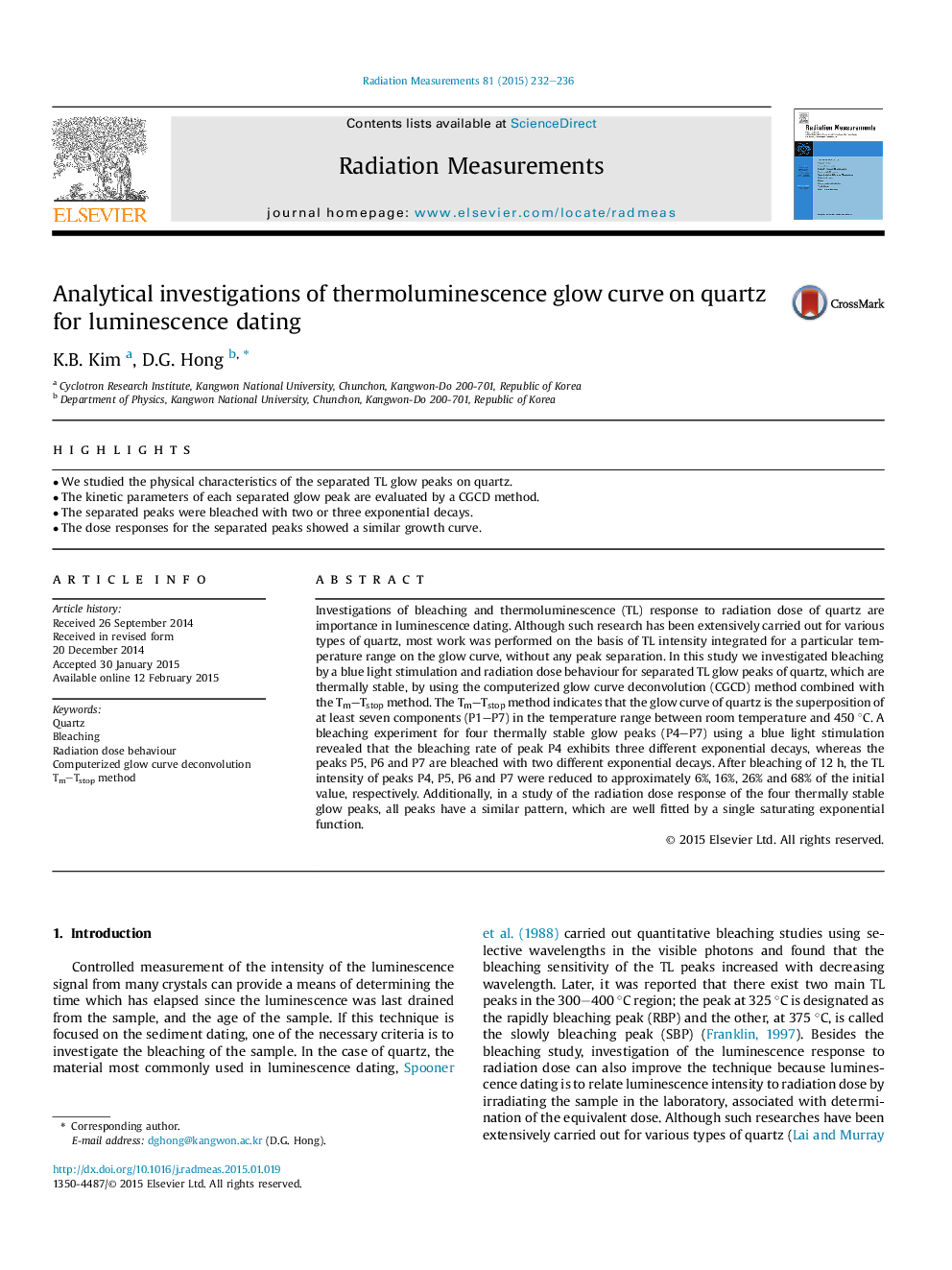| Article ID | Journal | Published Year | Pages | File Type |
|---|---|---|---|---|
| 1883280 | Radiation Measurements | 2015 | 5 Pages |
•We studied the physical characteristics of the separated TL glow peaks on quartz.•The kinetic parameters of each separated glow peak are evaluated by a CGCD method.•The separated peaks were bleached with two or three exponential decays.•The dose responses for the separated peaks showed a similar growth curve.
Investigations of bleaching and thermoluminescence (TL) response to radiation dose of quartz are importance in luminescence dating. Although such research has been extensively carried out for various types of quartz, most work was performed on the basis of TL intensity integrated for a particular temperature range on the glow curve, without any peak separation. In this study we investigated bleaching by a blue light stimulation and radiation dose behaviour for separated TL glow peaks of quartz, which are thermally stable, by using the computerized glow curve deconvolution (CGCD) method combined with the Tm–Tstop method. The Tm–Tstop method indicates that the glow curve of quartz is the superposition of at least seven components (P1–P7) in the temperature range between room temperature and 450 °C. A bleaching experiment for four thermally stable glow peaks (P4–P7) using a blue light stimulation revealed that the bleaching rate of peak P4 exhibits three different exponential decays, whereas the peaks P5, P6 and P7 are bleached with two different exponential decays. After bleaching of 12 h, the TL intensity of peaks P4, P5, P6 and P7 were reduced to approximately 6%, 16%, 26% and 68% of the initial value, respectively. Additionally, in a study of the radiation dose response of the four thermally stable glow peaks, all peaks have a similar pattern, which are well fitted by a single saturating exponential function.
